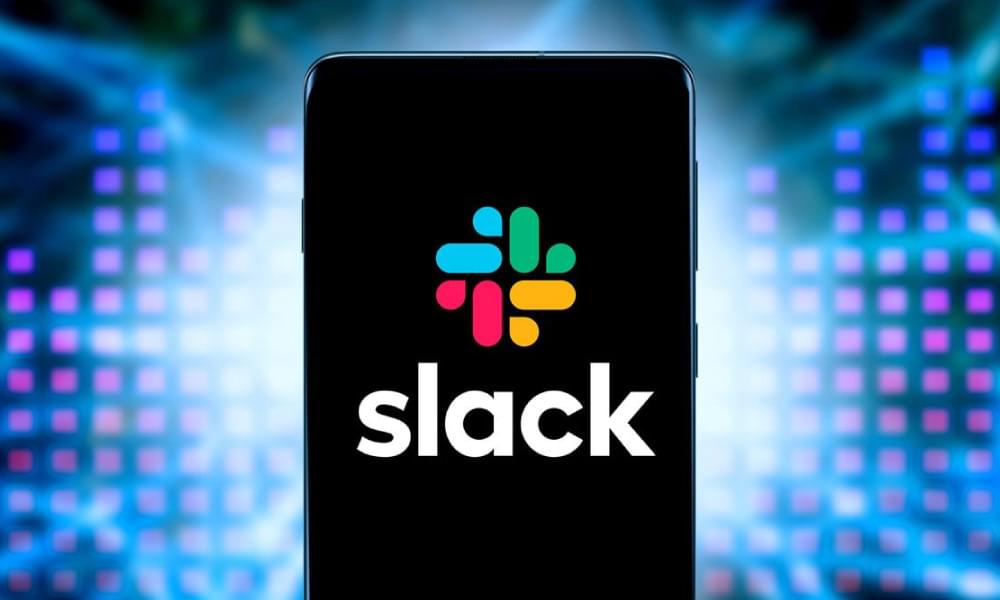Does Slack track your activity and location?
Slack works as a workplace productivity platform that handles two different types of information: Customer Data and Other Information. Customer Data has messages, files, and content users submit to the service. Other Information covers usage patterns and account details.
The platform takes data security seriously and makes it one of its core values. Slack protects workspace information with strong security measures. The platform encrypts all information during transmission and storage while processing Customer Data for workspace owners.
Slack’s data management goes beyond just storing messages. The platform keeps detailed records of workspace activities and tracks message histories and file uploads. Slack’s default setting keeps all messages and files forever to help users access them anytime.
The platform’s privacy policy explains how it collects data for online workplace tools and related websites. Slack differs from other services that focus on advertising. It makes money through premium-tier subscriptions instead of tracking data.
Amazon Web Services powers the service with default data storage in AWS US locations. Organizations that care about data protection can rely on Slack’s security certifications like ISO 27001, SOC 2, and FedRAMP Moderate. Users can also meet various regulatory requirements such as HIPAA, FINRA, GDPR, and CCPA/CPRA through the platform.
Does Slack track your activity?
Slack keeps detailed records of workspace activities through several tracking systems. The platform has sign-in details, device information, and user engagement patterns.
Access Logs let workspace owners and administrators track sign-in activities, IP addresses, and device usage patterns. These logs get updated every hour when members use Slack actively. The platform also creates new entries when users sign in, open the Slack app, or change their availability status.
Slack gives Audit Logs to Enterprise Grid customers to track potential security threats and unusual activities. These logs monitor anomaly events that help you spot suspicious user behavior or unauthorized access attempts.
The Analytics Dashboard is a great way to get insights into workspace usage patterns. This feature tracks:
- Message flow and file exchanges
- Storage utilization
- Daily and weekly active member counts
- Channel engagement metrics
Workspace owners can see Message Activity data that shows how people interact with specific messages. This data tracks views, reactions, and sharing patterns on different devices. The platform creates a complete digital footprint of user interactions in the workspace.
Administrators with paid plans can access better tracking features that include channel insights and member activity patterns. However, workspace owners control these tracking features and can turn off certain metrics or limit access to analytics data based on their priorities.
Does Slack track your location?
Slack’s data collection system uses location tracking as a key part of its functionality. The platform tracks location in two ways: through IP address detection from browsers and business addresses that employers provide.
Team owners can see their members’ locations through Workspace Access Logs by checking IP addresses. Slack claims this tracking helps to boost localization and make the user experience better.
Beyond simple location features, Slack works with third-party tools for specialized mapping. Users can find people and places near their office with the /map command. Team mapping tools show where remote employees work and let you filter by location.
All the same, location tracking brings up some security issues. Bad actors could use stored IP addresses to launch attacks or disrupt devices if they gain access. Workspace administrators can control these tracking features and change settings based on what their organization needs.
Time zone management ties directly to Slack’s location features and shows your local time to other team members. Remote workers should know that workspace administrators and teammates can figure out their location from their displayed time zone.
Does Slack track browsing history?
Slack takes a different approach to browser monitoring than standard web tracking tools. The platform collects log data only when users interact with Slack services in their web browsers.
Slack captures these browser details:
- Previous webpage visited before accessing Slack
- Browser type and configuration details
- Plugin information
- Language priorities
- Cookie data
Slack collects this browsing information but clearly states that it doesn’t track any online activities on third-party websites or services. Your general web browsing stays private from Slack’s tracking systems.
Slack’s cookie system serves two main purposes: it improves user experience and monitors behavior within Slack’s ecosystem. These tracking systems work only within Slack’s domain and aim to improve service delivery rather than monitor broader internet activity.
Workspace administrators can see specific browser-related data in Access Logs, such as IP addresses and device types that access Slack. This data updates hourly for active users and shows platform usage patterns without exposing external browsing activities.
Users concerned about privacy should know that Slack’s tracking abilities stay within its own ecosystem. Slack’s privacy policy states that it only collects browsing data during direct interactions with its services. This method differs from the invasive tracking that advertising-focused platforms use.
What else does Slack log?
Slack’s Audit Logs API goes beyond simple activity tracking and works as a sophisticated monitoring system for Enterprise Grid organizations. The API helps protect against unauthorized access and tracks user actions live.
The Analytics Dashboard shows these important metrics:
- Total membership and claimed members
- Monthly active members and posting frequency
- Message distribution across public and private channels
- File upload statistics
- Channel participation patterns
Slack’s Message Retention system keeps all communications by default. The workspace owners control retention periods and can choose between keeping messages forever or setting up custom deletion schedules. Enterprise Grid customers can also use Legal Holds to save specific user data, whatever the standard retention settings.
The platform watches for unusual patterns and spots unexpected app behaviors and suspicious user activities. Workspace administrators can see detailed metrics about each member’s platform usage on iOS, Android, and desktop devices.
Slack’s logging system is nowhere near traditional communication tools when it comes to tracking workspace activities. Each audit event has four essential parts: the actor, action, entity, and context. This complete logging system helps organizations maintain security standards and meet compliance requirements in regulated industries.
Does Slack show read receipts?
Slack doesn’t include read receipts in its standard features. Users can’t see if others have viewed their messages in group chats, channels, or direct messages.
Workspace owners and administrators can check message interaction data through the Message Activity feature. This tool shows:
- Number of members who viewed a message
- Count of reactions received
- Frequency of message sharing
- Total interaction metrics
Without a doubt, this creates a balanced way to handle communication privacy. Individual read status stays hidden, but administrators can measure how well announcements and internal communications work.
Messages in Slack mark themselves as read soon after you open a channel or direct message. This status appears only to you and keeps workplace communications private.
Does Slack show active on mobile?
Slack’s activity tracking works differently on mobile devices compared to desktop apps. The platform automatically marks users as active only when the mobile app stays open and running.
Mobile activity status follows its own rules. The status bubble shows green only while you keep the app open. It switches off right after you toggle away from the app. The system marks you as away when you close the app or navigate somewhere else.
Mobile users see these status indicators:
- Active - Solid green dot
- Busy - Solid green dot with DND “Z”
- Away - Hollow white dot
- Do Not Disturb - Hollow white dot with DND “Z”
Users can take control of their mobile presence manually. The ‘You’ tab in the mobile app lets you switch between active and away states. Your manual setting stays the same between connections and gives you better control over how others see your availability.
Workspace admins can see how their team uses mobile devices from access logs. These logs show the difference between platform access methods - Android App, iOS App, or other clients. Team owners can spot mobile users by looking at their connection patterns. Mobile users tend to switch between online and offline more often than desktop users.
The system sends mobile notifications when desktop users become inactive. Slack’s mobile activity tracking works with its notification system. This ensures messages reach users at the right time based on their active status and priorities.

How to prevent Slack from tracking you?
Slack users need multiple layers of protection to safeguard their privacy. We added specific security measures that limit tracking while keeping all features working properly.
Use a VPN
A Virtual Private Network (VPN) acts as your first defense against tracking. VPNs encrypt all communications and projects on Slack and create a secure tunnel for data transmission. Your online traffic routes through remote servers when you connect to a VPN. This masks your actual IP address from Slack’s tracking systems.
Your VPN will work best with Slack if you:
- Enable split tunneling to maintain connection speed
- Activate automatic kill switch features
- Select servers with AES-256 encryption
Browser privacy setting
Modern browsers come with built-in tools that protect your privacy on Slack. Your web browser’s Global Privacy Control setting can limit cookie-based activity sharing. You can also adjust browser-specific privacy settings to control how Slack interacts with your system.
Cookie management
Slack uses both session-based and persistent cookies. Session cookies disappear when you close your browser. Persistent cookies stay until you delete them or they expire. These small text files help with:
- User recognition during visits
- Preference remembrance
- Tailored experiences
- Secure interactions
You need to be careful when managing cookies because turning them off completely might break core Slack features. Slack lets you customize cookie settings through its management panel. You might lose some personalization features by limiting cookie permissions, but many privacy-conscious users find this trade-off worthwhile.
Browser rules can help you manage cookies for each site separately. This lets you keep essential features working while reducing unnecessary tracking.
How bosses use Slack to track your work?
Slack’s platform gives workplace administrators powerful monitoring tools. The Primary Owner controls all workspace data and has access to member content and profiles.
Slack offers different monitoring features based on subscription levels:
- Free and Pro plans allow access to public channel data
- Business+ plans require approval for non-public data exports
- Enterprise Grid plans to enable complete data access through self-serve tools
The analytics dashboard provides workspace owners with detailed member metrics. They can track active days on different devices, count messages, and monitor file uploads. The platform also allows administrators to monitor both public and private communications. Enterprise Grid subscribers receive complete audit logs.
Team leaders use these tracking features to show productivity results to executives. The analytics dashboard shows how members use channels, distribute messages, and follow activity patterns. Administrators can see which channels people visit most often. They also track message counts and watch file sharing.
The Discovery API lets employers connect Slack to approved external tools to improve monitoring. Organization owners appoint Legal Holds Admins who can keep specific data forever. Workspace owners can set custom retention times for messages and files and save all versions of edited or deleted content.
Enterprise subscribers get complete visibility into workplace communications. They can search messages in all channels, check employee status, and study how people use the platform. The analytics dashboard helps track monthly active members and shows how they participate in different communication channels.
Conclusion
Slack is a powerful workplace communication tool that allows you to track extensive data. The platform records user activities, such as message interactions and location data, while setting clear limits on data collection and privacy.
Workspace admins have the most critical monitoring capabilities through analytics dashboards, audit logs, and access records. These tools give an explanation of employee involvement, communication patterns, and how people use the platform on different devices.
Getting complete privacy on Slack might be challenging, but you can protect your data with these simple steps:
- VPN services hide your real location
- Browser privacy settings reduce tracking
- Cookie management cuts down extra data collection
- Custom retention policies let you control who sees messages
Knowledge about these tracking systems helps you make smart choices about your Slack usage. The platform creates a balance between what organizations need to oversee and user privacy, and both admins and team members can control their settings.
FAQs
Does Slack monitor employee activities?
Yes, Slack tracks various aspects of employee activities within the platform. This includes message interactions, file uploads, and general usage patterns. However, the extent of tracking depends on the subscription tier and settings configured by workspace administrators.
Can others see my location on Slack?
Slack doesn’t directly display your location to other users. However, workspace administrators can view your IP address through Access Logs, which can indicate your general location. Additionally, your time zone settings may indirectly reveal your location to team members.
Is my browsing history visible to Slack?
Slack does not track your general web browsing history. It only collects data related to your interactions within the Slack platform and its associated websites. This includes information like the webpage you visited before accessing Slack and your browser type.

